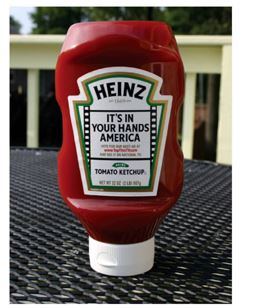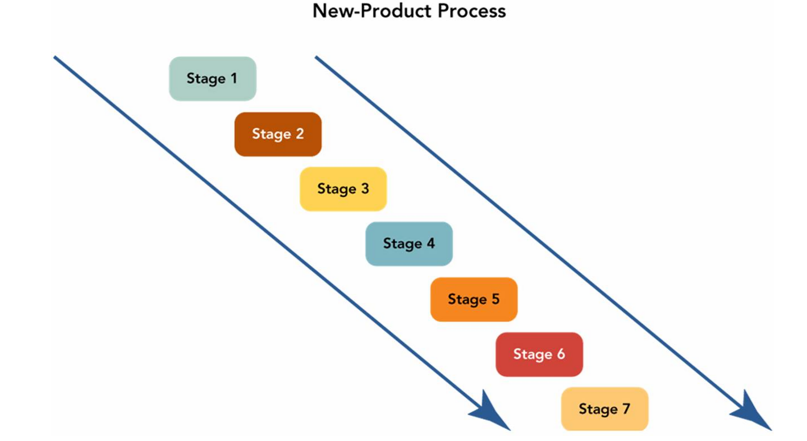A) their method of delivery.
B) their use of idle capacity time.
C) the nature of their ownership.
D) their location on perceptual maps.
E) organizational reach.
Correct Answer

verified
Correct Answer
verified
Multiple Choice
Test marketing involves offering a product for sale
A) to random sample of people in the top ten major cities of the U.S.
B) in as broad a geographic region as possible.
C) to consumers that are representative of the target market.
D) on a limited basis in a defined area.
E) only on certain days of the week and hours of the day.
Correct Answer

verified
Correct Answer
verified
Multiple Choice
Among business products, which of the following would most likely be considered an industrial service?
A) tractor
B) phosphoric acid
C) photocopier maintenance
D) athletic training facility
E) syringes
Correct Answer

verified
Correct Answer
verified
Multiple Choice
The seven stages an organization goes through to identify business opportunities and convert them into salable products or services is referred to as the __________.
A) commercialization process
B) SWOT process
C) business prospect development cycle
D) opportunity stage gate sequence
E) new-product process
Correct Answer

verified
Correct Answer
verified
Multiple Choice
In marketing, an idea is
A) a thought that leads to a product or action.
B) an inspiration that evolved from market research.
C) an observation about a series of events.
D) a concept explaining the behavior of an individual or group.
E) an observation about an individual or group and how they use a service or product.
Correct Answer

verified
Correct Answer
verified
Multiple Choice
All of the following are examples of test markets EXCEPT:
A) controlled test market
B) concept test market
C) simulated test market
D) laboratory test market
E) standard test market
Correct Answer

verified
Correct Answer
verified
Multiple Choice
How a person establishes expectations for a service not yet experienced is influenced by word-of-mouth communications, __________, past experiences, and promotional activities.
A) personal needs
B) the economy
C) consumer income
D) competitive trends
E) how the organization delivers its service
Correct Answer

verified
Correct Answer
verified
Multiple Choice
The categories for people-based services include __________.
A) volunteers, skilled operators, and professionals
B) unskilled labor, skilled labor, and professionals
C) unskilled operators, unskilled labor, and skilled labor
D) automated, skilled operators, and unskilled labor
E) automated, skilled operators, and professionals
Correct Answer

verified
Correct Answer
verified
Multiple Choice
All of the different product lines offered by an organization are collectively referred to as a
A) product class.
B) product mix.
C) product SKUs.
D) marketing mix.
E) target mix.
Correct Answer

verified
Correct Answer
verified
Multiple Choice
 -When Heinz introduced its new EZ Squirt Ketchup bottle (see the photo above) , the degree of newness for the consumer would make this a
-When Heinz introduced its new EZ Squirt Ketchup bottle (see the photo above) , the degree of newness for the consumer would make this a
A) continuous innovation.
B) discontinuous innovation.
C) dynamically continuous innovation.
D) spontaneous innovation.
E) continuous invention.
Correct Answer

verified
Correct Answer
verified
Multiple Choice
The division of products into durable and nondurable goods helps to __________.
A) comply with NAICS guidelines
B) address environmental concerns
C) comply with ISO 9000 requirements
D) classify products for tax purposes
E) provide direction for marketing actions
Correct Answer

verified
Correct Answer
verified
Multiple Choice
Which of the following statements about services is most accurate?
A) Although a major contributor to the GDP nationally, services play only a minor role in GDP on a global scale.
B) The marketing of services is, in a practical sense, identical to the marketing of products or ideas since they both satisfy customer needs.
C) Only 10% of all jobs created in the United States are in the services sector.
D) In the U.S., services contribute about twice the value of goods to the GDP.
E) There is much more in common with the marketing of services and business products than there is between the marketing of services and consumer products.
Correct Answer

verified
Correct Answer
verified
Multiple Choice
One of the eight primary marketing-related reasons for new-product failure is __________.
A) the product is too innovative
B) a competitor with a similar product withdrew from the market
C) too socially controversial
D) poor product quality
E) product was marketed as a new product but it did not meet the legal definition of new
Correct Answer

verified
Correct Answer
verified
Multiple Choice
After the new owner purchased a fully equipped yogurt factory, it took a yogurt master a year and a half to come up with the perfect formulation for Chobani Greek Yogurt. The most likely stage of the new-product process during which this time was spent is __________.
A) development
B) market testing
C) idea generation
D) screening and evaluation
E) business analysis
Correct Answer

verified
Correct Answer
verified
Multiple Choice
Screening and evaluation refers to the stage of the new-product process
A) at which prospective customers are exposed to new product prototypes for the first time.
B) at which new product concepts that have been found viable are converted into actual prototypes.
C) that internally and externally evaluates new-product ideas to eliminate those that warrant no further effort.
D) that specifies the features of the product and the marketing strategy needed to bring it to market and make financial projections.
E) where consumers evaluate a new product's performance in an actual-use situation.
Correct Answer

verified
Correct Answer
verified
Multiple Choice
Commercialization is the stage in the new-product process
A) at which the product is positioned and launched in full-scale production and sales.
B) during which the firm performs its final evaluations of the new-product.
C) when second-year sales forecasts are compared to actual first-year sales figures using a marketing dashboard.
D) when advertising campaigns are evaluated using Starch scores to identify brand awareness.
E) at which the product generates the greatest sales and profits.
Correct Answer

verified
Correct Answer
verified
Multiple Choice
A product line is a group of product or service items that are closely related because they satisfy a class of needs, are used together, are sold to the same customer group, and are distributed through the same type of outlets, or __________.
A) are made of similar components
B) fall within a given price range
C) made from the same formulations
D) are identical except for price
E) require high levels of R&D
Correct Answer

verified
Correct Answer
verified
Multiple Choice
Sarah has a backache due to overexertion. She believes a massage would loosen her back muscles and help her feel better. She is concerned because a massage, unlike a pair of shoes, cannot be experienced or seen before she buys it. Which characteristic of services is she concerned about?
A) incongruity
B) inconsistency
C) intangibility
D) inventory costs
E) inseparability
Correct Answer

verified
Correct Answer
verified
Multiple Choice
 -Figure 9-5 above represents the seven stages of the new-product development process. Stage 1 is the __________ stage.
-Figure 9-5 above represents the seven stages of the new-product development process. Stage 1 is the __________ stage.
A) idea generation
B) screening and evaluation
C) screening and analysis
D) new-product strategy development
E) product assessment
Correct Answer

verified
Correct Answer
verified
Multiple Choice
Services depend on the people who provide them. As a result, their quality varies with each person's capabilities and day-to-day job performance. This element of services is referred to as __________.
A) incongruity
B) differentiation
C) variation
D) inconsistency
E) intangibility
Correct Answer

verified
Correct Answer
verified
Showing 21 - 40 of 388
Related Exams